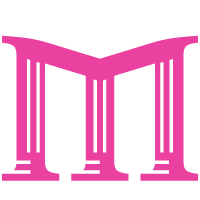About old Japanese writing system and new Japanese writing system
初版 2023/03/30 10:39
改訂 2024/04/24 14:24
当ミュージアムは海外からのアクセスがかなりあるということが分かったので(これには理由があってそもそも日本印紙の収集家は海外に多いのである。この不思議な現象には明治にまで遡る複雑な理由があるのだが、それについて論じると話が大きくずれてしまうのでここでは扱わない)、恐らく海外の日本印紙収集家の最も苦労するところであろう、戦前と戦後の日本語の表記方法と漢字の違いについて簡潔にまとめておく(もっとも私は英語が得意であるという訳ではないので妙な表現や文法的誤りが見られるかも知れない。ご指摘頂けると非常にありがたい)。
My museum seems to be accessed from overseas. Therefore, I would like to briefly summarize the differences between prewar and postwar Japanese writing systems and Kanji(Chinese characters), which may be the most difficult for overseas collectors of Japanese revenue stamps (Although my English is poor...).
※※※※※※※※※※
The Japanese writing system is very complex, with kanji, hiragana, and katakana used together. Moreover, there are significant differences in the way kanji and Japanese are written before and after World War II.
Before going into the main subject, I would like to write about the difference between "収入印紙(收入印紙)" and "収入証紙(收入證紙)". "収入印紙" are revenue stamps issued by the national government, while "収入証紙" are revenue stamps issued by prefectural and municipal governments. In addition, "収入証紙" are sometimes described as "証紙," "領収証紙," "領収証票," etc.
〈Reading Direction〉
In prewar Japanese official documents and other documents written horizontally (Japanese at that time was generally written vertically), the characters are basically read from right to left, just as in Arabic script.
Let's take a look at the revenue stamps issued by Fukushima Prefecture in 1917.

It is read from right to left as indicated by the red arrows.
Let us now look at the revenue stamps issued by Fukushima Prefecture in 1961.

It is read from left to right as indicated by the blue arrows.
To summarize briefly, before World War II (until the late 1950s in some areas), sentences were read from right to left, and after World War II from left to right(However, there are many examples of reading from left to right before World War II, just as there are today).
〈Old Kanji and New Kanji〉
This is the most difficult part, but there are significant differences in the Kanji(Chinese characters) used before and after World War II. Moreover, there are examples where old Kanji continued to be used for a while after the war and were finally replaced by new ones in the 1960s, and there are even examples where the old ones are still in use today. Thus, the history of old Kanji and new Kanji is complicated.
Let's look again at Fukushima Prefecture revenue stamps issued in 1917.


The top of the stamp reads "福島縣收入證紙".These are the old characters, and the new characters are "福島県収入証紙".
Let us look at revenue stamps issued by Fukushima Prefecture around 1950.

The upper part of the stamp reads "福島縣" and the lower part reads "収入証紙". When these are corrected to the new characters, they become "福島県" and "収入証紙," respectively, and it is clear that both the old and new characters coexist. Also,the part where the amount of money is written is written with the character "圓," which is the old form of "円(yen)".
Now let's take a look at Fukushima Prefecture revenue stamps issued in 1961, which were issued even later.

At the top of the stamp is written "福島県収入証紙".
Thus, it is normal for old characters to be replaced by new ones as history progresses, but there are some revenue stamps that continue to use the old characters today.
For example, Gifu City and Fukuoka City still issue revenue stamps with old characters.


In addition, the characters on Fukuoka City revenue stamps are still read from right to left. They are truly living fossils.
The following is a summary of the correspondence between the old and new characters that are important in the collection of Japanese revenue stamps.
old new meaning
收入 収入 income
證紙 証紙 revenue stamps(Stamps issued by local governments. or stamps issued by the national government that have special characteristics, such as no face value.)
印紙 〃 revenue stamps(Stamps issued by the national government.)
收入印紙 収入印紙 revenue stamps(General-revenue stamps issued by the national government.)
收入證紙 収入証紙 revenue stamps(Revenue stamps issued by local governments.)
圓 円 yen
錢 銭 sen
厘 〃 rin
國 国 nation
縣 県 prefecture(Ken)
府 〃 prefecture(Fu)
道󠄁 道 prefecture(Dō)
都󠄀 都 prefecture(To)
市 〃 City(Shi)
町 〃 Town(Machi/Chō)
村 〃 Village(Mura/Son)
稅 税 tax
納󠄁稅 納税 tax paymant
檢査 検査 examination
手數料 手数料 commission
使用料 〃 usage Fee
農產物 農産物 agricultural products
海產物 海産物 marine products
水產物 水産物 marine products
林產物 林産物 forest products
米穀󠄀 米穀 rice
木材 〃 lumber
木炭󠄁 木炭 charcoal
製材 〃 wood products
發行 発行 issue
移出 移出 export
輸󠄁出 輸出 export
●Chinese numerals
old new meaning
一 〃 one
二 〃 two
三 〃 three
四 〃 four
五 〃 five
六 〃 six
七 〃 seven
八 〃 eight
九 〃 nine
十 〃 ten
十五 〃 fifteen
二十,廿 二十 twenty
三十,卅 三十 thirty
四十,(卌) 四十 forty
五十 〃 fifty
七十 〃 seventy
百 〃 one hundred
二百 〃 two hundred
三百 〃 three hundred
五百 〃 five hundred
千 〃 one thousand
二千 〃 two thousand
三千 〃 three thousand
五千 〃 five thousand
一萬 一万 ten thousand
●Special Chinese numerals to prevent tampering
old new meaning
壹 壱 one
貳,貮,弍 弐 two
參,叄 参 three
拾 〃 ten
●Prefectures of Japan
old new meaning
北海󠄀道󠄁 北海道 Hokkaido
靑森縣 青森県 Aomori
岩手縣 岩手県 Iwate
宮城󠄀縣 宮城県 Miyagi
秋田縣 秋田県 Akita
山形縣 山形県 Yamagata
福島縣 福島県 Fukushima
茨城󠄀縣 茨城県 Ibaraki
栃木縣 栃木県 Tochigi
群馬縣 群馬県 Gunma
埼玉縣 埼玉県 Saitama
千葉縣 千葉県 Chiba
東京府 〃 Tokyo(〜1943)
東京都󠄀 東京都 Tokyo(1943〜)
神󠄀奈川縣 神奈川県 Kanagawa
山梨縣 山梨県 Yamanashi
長野縣 長野県 Nagano
新潟縣 新潟県 Niigata
富山縣 富山県 Toyama
石川縣 石川県 Ishikawa
福井縣 福井県 Fukui
岐阜縣 岐阜県 Gifu
靜岡縣 静岡県 Shizuoka
愛知縣 愛知県 Aichi
三重縣 三重県 Mie
滋󠄁賀縣 滋賀県 Shiga
京都府 京都府 Kyoto
大阪府 〃 Osaka
兵庫縣 兵庫県 Hyogo
奈良縣 奈良県 Nara
和歌山縣 和歌山県 Wakayama
鳥取縣 鳥取県 Tottori
島根縣 島根県 Shimane
岡山縣 岡山県 Okayama
廣島縣 広島県 Hiroshima
山口縣 山口県 Yamaguchi
德島縣 徳島県 Tokushima
香川縣 香川県 Kagawa
愛媛󠄁縣 愛媛県 Ehime
高知縣 高知県 Kōchi
福岡縣 福岡県 Fukuoka
佐賀縣 佐賀県 Saga
長崎縣 長崎県 Nagasaki
熊本縣 熊本県 Kumamoto
大分縣 大分県 Ōita
宮崎縣 宮崎県 Miyazaki
鹿兒島縣 鹿児島県 Kagoshima
沖繩縣 沖縄県 Okinawa
※岩手縣 is also written as a 巖手縣
※※※※※※※※※※
Practice

This is a stamp issued before WWII for the inspection of wood products in Hyogo Prefecture. Note that although this is a pre-WW2 stamp, it reads from left to right, just as it does today.
Now let's try to decipher the letters!

First, the area indicated by the red oval has the character "縣", which can be judged to be the name of a prefecture.Since "兵庫" means "Hyogo", we can understand that it was issued by Hyogo Prefecture.
Next, let's look at the area indicated by the yellow oval. Since "製材" in "製材檢査" means "wood products" and "檢査" means "examination," we can see that"製材檢査" means "inspection of wood products". And let's also look at the part circled by the brown oval. The word "收入証紙" means "revenue stamps". Let's connect this with the "製材檢査(inspection of wood products)" mentioned earlier. We can see that "製材檢査收入証紙" means "wood product inspection stamps".
Finally, let's look at the green oval in the center. As you can see, this shows the value. Complex Chinese numerals are not used here, so the only problem is "錢". Since "錢" is the monetary unit "Sen", we can understand that the value of this stamp is 1 sen.
Thus, the stamp was identified as a wood product inspection stamp (value 1 sen)issued by Hyogo Prefecture.

By the way, you may have noticed the symbol displayed at the top of the stamp. This is the old prefectural emblem of Hyogo Prefecture.






